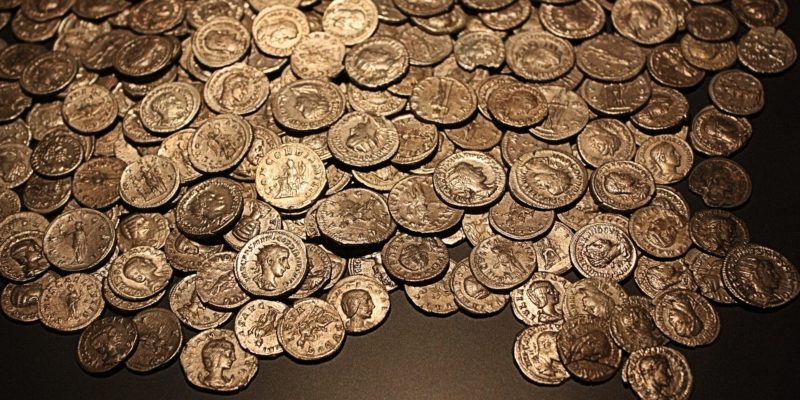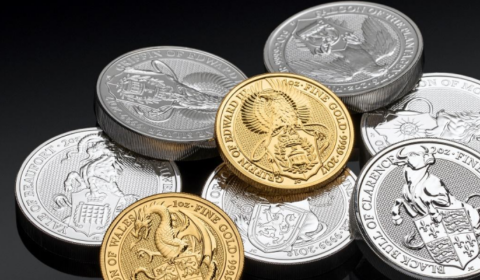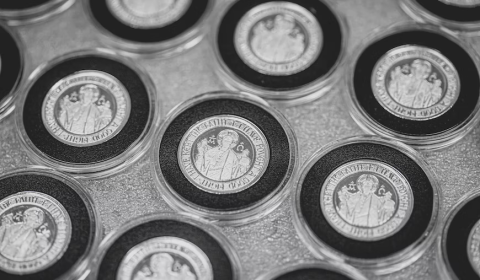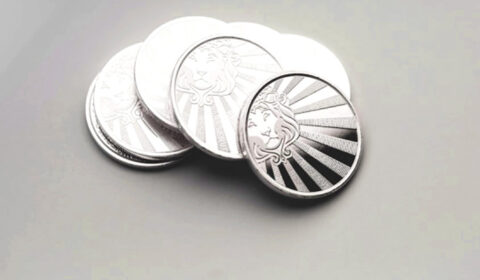The Origins Of Gold: Everything You Need To Know About Its History

The funny thing is that while gold has in fact been considered very valuable all throughout history, it was only around 550 BC that it started to be used as money.
The usage and investment of gold dates back to ancient times when it was first discovered in rivers and streams. Its alluring appearance and lack of corrosion enticed people into placing value on the metal.
According to the National Mining Association, its usage date back to the early 4000BC in Eastern Europe, where it was used as decoration in households.
Later on, in 1500 BC, Egypt made gold the first “official” medium of exchange for international trade. It created a coin that became the standard unit of measure within the entire Middle East.
Other people, including the Babylonians, were also experimenting with gold during this time period. The Babylonians were actually the first ones to figure out a method to test gold’s purity in a metal alloy.
Concurrently, the Egyptians came up with a way to cast the gold into basically any shape.
This allowed people especially sculpture artists, to create intricate art pieces and sculptures made from gold, thereby increasing gold’s presence in both currency and art. As a whole, gold’s relevance and value went up.
Around 50 BC, the Romans started using gold in their coins, called Aurum. This is also where the chemical symbol for gold “Au” originally comes from.
The Roman Empire And Gold
During the reign of Roman Emperors, the price of gold was subject to change to benefit the agendas of the Emperors at the time.
For example, during Emperor Augustus’ reign from 31 BC to 14 AD was set at 1 pound of gold to 41 coins.
However, later on in the centuries, around 213 AD, Emperor Marcus Aurelius Antonius changed the value of gold.
He made the new value 50 coins for a pound of gold, making gold less accessible and more expensive.
In the earlier half of the 300 AD century, Emperor Constantine the Great increased the value of gold a step even further than this to 70 coins.
This trend remained, and the value of the currency actually decreased so much that it led to a period of hyperinflation.
In fact, by around 340 AD, the price of a single pound of gold had actually shot up to 20 Million Denari (silver coins).
The Classical Gold Standard
The Classical Gold Standard was basically a unified system under which nearly all of the countries in the world connected their currency to a specified value of gold or to that of another currency that was linked to gold.
Therefore, exchange rates between participating countries had been fixed.
This gold standard applied and existed from around the 1870s until 1914, when the First World War broke out.
Attempts were regularly made to encourage other countries to go back to this gold standard, but none such attempts were successful after the Great Depression.
This had been a great time for gold because domestic currencies could freely convert into gold at the individual fixed rates, and there was NO RESTRICTION to the exporting and importing of gold.
But alas, the gold standard was a temporary phenomenon. It was only until the time of The Second World War that an alternative had been introduced.
The Bretton Woods System
Once the Second World War was over, it became increasingly clear that a new system of exchange was needed to replace the initial Gold Standard.
The alternative was drawn up in the year of 1944 at the Bretton Woods conference.
After the War, countries craved the economic stability and also flexibility in terms of trade that was present at the time of The Gold Standard.
Because the superpower, the United States, was the alpha dog economically, the US Dollar was made the center of this new system of currency exchange.
Only the US Dollar was allotted an exchange rate with gold of one ounce of gold to $35.
All of the other currencies, on the other hand, had relatively fixed exchange rates to the dollar.
During this period, there was a new economic boom, and the economy of the world benefited greatly from it.
Recessions were miniature and economic fluctuations became uncommon.
Insidious as a virus, though, increasing monetary growth in the US led to increasing inflation.
Similar to a virus, this inflation also spread to other countries because of an increasingly negative US balance of payments.
Due to increasing inflationary pressure on their own end, many countries started trading in the US Dollar for gold.
Because this practice negatively impacted the US economy, the US put significant pressure on other countries to avoid this practice.
Eventually, in 1971, US President Nixon actually suspended gold convertibility.
This was a key moment in the history of gold because it essentially shot a key part of the Bretton Woods Agreement right in the foot.
The remaining part of the system also slowly but surely died out on its own in 1973.
A big reason that the Bretton Woods Agreement collapsed the way it did was because of incompatible monetary policies for the US as the key “currency country” of the system.
There were official rules in place to keep the Agreement together, which the US violated after 1965.
Present Day
After the collapse of the Bretton Woods System, countries took up a flexible “floating” exchange rate system, which is still being used to this day.
The dollar standard is also still present and being used, only without gold.
While many countries aren’t exactly happy about the US Dollar still being at the forefront of the currency exchange rate system, the likelihood that this practice will change in the near future remains slim.
The fact that the world’s countries wanted to have gold over dollars and the US ended a whole agreement over the exchange of gold tells you how valuable gold is.
And its value does not go down over time. In fact, during times of inflation, it even goes up and is worth investing in for your IRA.
Want guidance about how you can invest in gold for your retirement, store it and keep a fiscal cushion for yourself during hard economic times?
At Orion Metal Exchange, we can provide you with premier guidance and support to help you invest in the top precious metals IRAs to secure your retirement.
You can begin personally discovering the sheer economic power of investing in gold and even silver today! We also provide private vault storage rentals to facilitate you keeping your investments completely safe.






